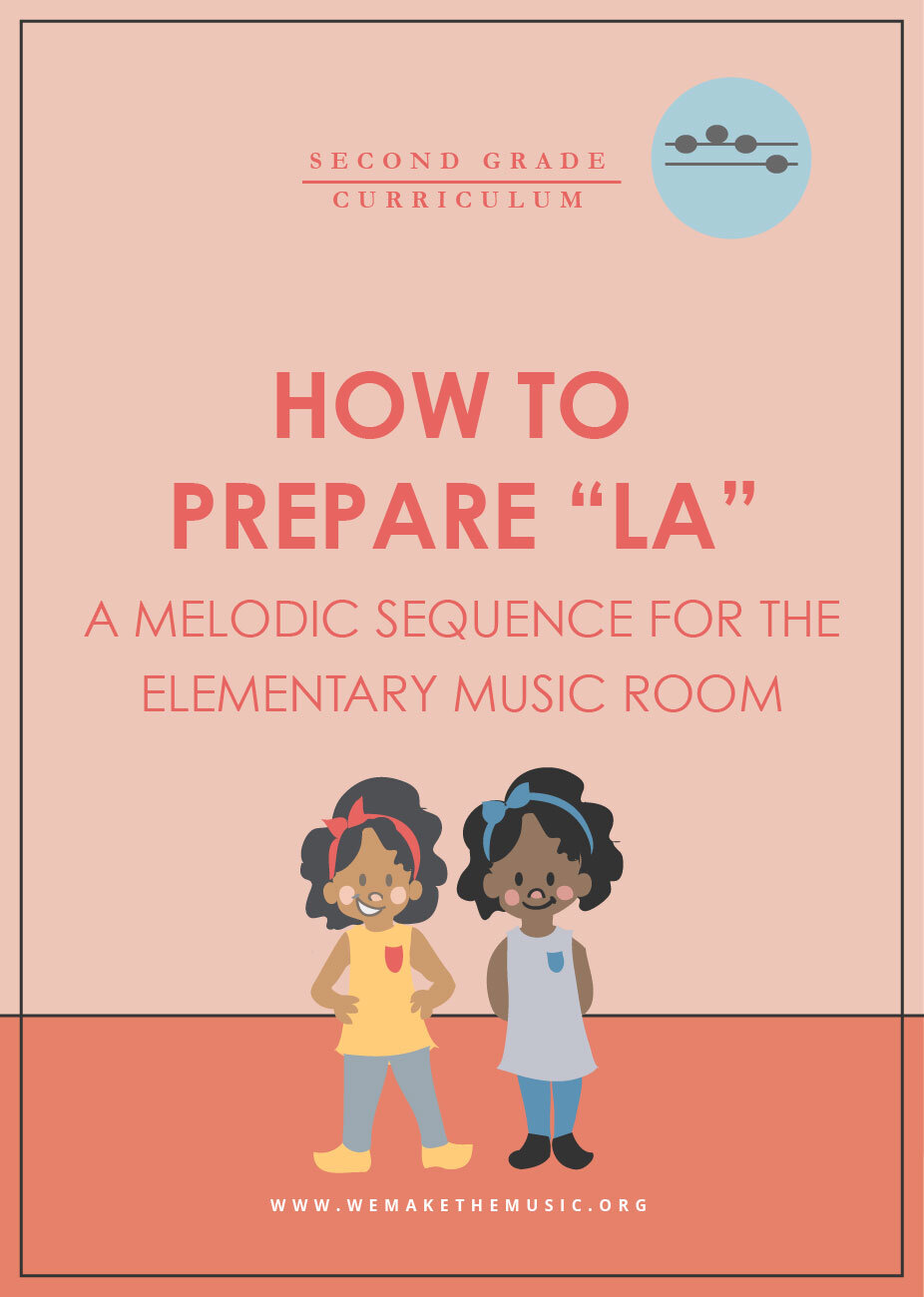How to Prepare La
Our songs have been picked out - now it’s time to prepare la! Here are some of my favorite ways to get this melodic element in students’ ears.
We’ll explore this new element through listening, singing, and moving!
1. Sing Known Songs and Play Games
The easiest way to prepare any element is by singing songs! Check out this post for ideas.
Don't Rush This Step!
It might seem like this is a step to move through quickly - after all, aren’t we just singing and playing games? But this step of the process is crucial for students.
As we sing and play games, students are internalizing our target melodic element. They are becoming familiar with the material so they can have a true understanding of it later.
2. Discover a Note Higher Than Sol
After students have had experience with la through singing, it’s time to make them aware of a note higher than sol. You can follow a script like this:
Students sing Apple Tree
Students aurally decode the first four beats of the song (“apple tree, apple tree”) and sing on solfege (“sol sol mi, sol sol mi”)
Students sing the next four beats of the song (“will your apples fall on me”).
Teacher asks students how many beats we just sang (4)
T: “Which beat had the highest sound?” (beat 2)
T: “Was that sol, or a pitch higher than sol?” (higher than sol)
Tell the class that we’ll call that new high note, “high”.
Sing those four beats again with “high” for the mystery pitch
But Don't Stop There!
Repeat this activity using several different songs from this post, or some of your own favorite songs!
I also love to go back to games like Apple Tree or Bluebird and have students replace the word on la by singing “high” instead.
3. Create a Visual Representation of What You Hear:
After you’ve sung and played several different songs, and discovered “high” in several different songs, students may be ready to create a visual representation of what they hear.
Start Away From the Staff
A great place to start with notation is actually away from the board, using hand signs.
Ask students to figure out the sol, mi, and “high” to the first eight beats of apple tree. (The first four beats should be easy, especially if they have used this song before to explore sol and mi.)
In the next four beats, they’ll discover the new note, “high”. At this point you can introduce a hand sign for high.
I always have my students use body solfege at this age, and then switch to the traditional curwin hand signs later (around 3rd or 4th grade).
From Hand Signs to the Staff:
We start with hand signs because we always want students to connect what they see visually to what they feel and hear kinesthetically and aurally. Once they’re comfortable signing known material, we can transfer it to the staff.
Students “guide” the teacher write the melody on the staff using their knowledge of sol and mi. When they get to the new note, “high”, I simply use a question mark, since students don’t know the real name of the element yet.
With the first eight beats of Apple Tree done, students can go on to write down portions of their other favorite la songs in another lesson.
These teaching strategies are perfect for any teacher looking for a step-by-step sequence of how to train young musicians in this melodic element.
I love that they are rooted in moving, singing, listening, and thinking, and I love that the process calls on our students to be curious about what they hear. We have the best job in the world.
Happy teaching!


